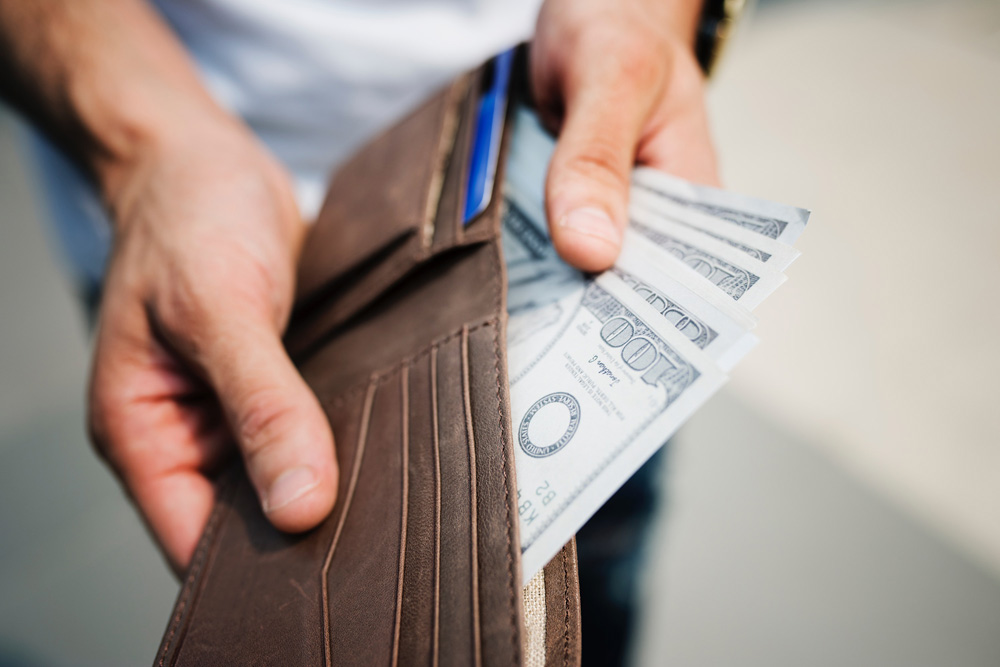What Is A Personal Loan? Everything You Need To Know
It’s our mission to make money matters less insane. We provide financial editorial content free for all and are supported by some of our affiliate partners included in this post which earns us a commission. We hope you enjoy our content and subscribe to our newsletter.
During the first quarter of 2018, U.S. household debt reached an all-time high of $13.2 trillion. In December 2017, our personal savings rate dropped to it’s lowest level since the debt-ridden mid-2000s, landing at a meager 2.4% of annual income. Even for those making six figures a year, 2.4% is almost nothing.
With so little disposable income being put aside, many in the US would find themselves in a financial disaster if any big, unexpected expense popped up – large sums of money can be needed at the drop of a hat. What if your car needs a major repair, your pet becomes sick, or your child wants to take a summer semester of college that would require additional funds?
In these situations, how can we make do? One of the most effective ways can be personal loans. If you’re wondering to yourself, “what is a personal loan?” – it is simply money you borrow from an online lender, bank, or credit union for personal financial reasons.
What Is A Personal Loan?
Borrowers can use personal loans for any reason. Most are unsecured meaning you don’t need collateral to be approved. A mortgage is an example of a secured loan. The collateral is the house you purchase. If you don’t make your payments, the bank can take back your house.
Personal loans don’t require collateral because the amounts borrowed are relatively low, the average is $7,576. The lender allows you to borrow a certain amount of money, the principle. The cost of the loan is the interest rate.
The interest rate will depend on things like your credit score, credit report, and debt-to-income ratio. Those deemed to be low risk will be offered a lower interest rate. The loan, including interest, is paid back in fixed monthly payments typically over a period between two and five years.
Getting a Personal Loan is fast and easy. You can check your rate without affecting your credit score:
- Credible: This online loan marketplace will show you rates from up to 11 lenders offering personal loans from $1,000 to $100,000 in just two minutes (a huge time saver).
You Can Do Anything With Personal Loans?!
There are hardly any restrictions when it comes to how you can use the funds. Yes, you can apply for a personal loan to pay for a vacation or buy a brand new wardrobe. You shouldn’t of course and most people don’t borrow money to pay for things like those.
When people seek out personal loans debt consolidation is usually the reason. A personal loan can be used to pay off credit cards, medical debt, payday loans or to take control of student loan debt.
Another way to use a personal loan is to pay for an expensive event like a wedding or a funeral. Given that the average wedding costs $33,391 and the average funeral costs $7,360 it’s not hard to see why people need to borrow for them.
Save and Simplify
What is a personal loan best for? Personal loans can be a great tool to improve your personal finances. If you’ve ever been mired in credit card debt, you know how hard it is to pay off. But do you know why? It’s the interest rate. The average interest rate on a credit card is a whopping 17.41%.
When you carry a credit card balance, you continue racking up interest charges. If you’re only paying the minimum monthly payment, it can take years to pay those cards off and you’ll end up paying thousands of dollars just in interest.
If you have several credit cards and aren’t good at keeping track of the due dates so you pay at least the minimum on time, you’re going to be racking up late fees too.
A personal loan can be used to pay off your credit card debt. Because the interest rate on these loans is usually lower than the rate on the credit cards, you can save thousands of dollars in interest depending on how much debt you had.
Rather than keeping track (or not keeping track) of the due dates for several cards, you just have a single payment to make. And your credit score is likely to increase, often dramatically once the cards are paid off.
Ideally, you have an emergency fund to dip into for things like urgent home or auto repairs but if you don’t, you might consider reaching for a credit card. But if you can’t pay the balance off quickly, you’ll be hit with interest charges. A personal loan is a better solution for unexpected emergency expenses.
We all know how expensive medical bills can be and things are only forecast to worsen. In 2014, 49% of patients were unable to fully pay off the balance of their medical bills. By 2015 it was 53%, in 2016, 68%. In 2020, that number is predicted to rise to 95%.
Health care providers aren’t shy about sending past due bills to collection agencies either. A study found that 59% of people contacted by a debt collection agency reported that it was due to a medical bill. When past-due bills go to collections, your credit score will take a hit.
If you’re facing medical bills you can’t pay, a personal loan can save you from ending up in collections.
Some Cautions
While personal loans are among the best tools you can use to improve your personal finances, they won’t work for everyone or for every kind of debt.
What is a personal loan going to require? Because most personal loans don’t require collateral, they’re something of a risky prospect for lenders and not everyone can qualify. Lenders will look at the following:
- A credit score between 620-750
- A debt-to-income ratio below 45%
- Types of credit or loans you’ve had
- Loan totals and credit utilization
- Payment history
- Any accounts in collection, bankruptcies, foreclosures or other negative marks on our credit report
It’s not impossible to be approved for a personal loan if you’re not an ideal candidate but the loan will have a higher interest rate than a loan for someone with healthier financials.
If you’re one of the 44 million Americans with student loan debt, a personal loan might seem like the ideal solution. And it can be but if your loans are federal, a personal loan may not be for you. Federal student loans come with programs meant to help borrowers who are having trouble making payments including:
- Income-Bases Repayment
- Pay As You Earn
- Revised Pay As You Earn
- Income-Contingent Repayment Plan
- Income-Sensitive Repayment Plan
There are also student loan forgiveness programs available for borrowers who meet certain criteria. But when you use a personal loan to pay off a federal student loan, you lose those access to those programs.
Private student loans don’t include these programs so if you can get a personal loan with a lower interest rate than your private student loans, the personal loan can save you money and simplify your debt just as it can for credit card debt.
Where to Get a Personal Loan
In the old days, you had to go to a bank or credit union to get a personal loan. It required a lot of paperwork, the process could take several weeks, and you were limited to the lenders in your area.
What is a personal loan application process like? You can do it right from your computer, quickly shop around for the best rates, and have the money within a few days. Online lenders really streamline the process.
Credible:
By answering just a few simple questions, Credible will give you personal loan offers from up to 11 lenders in just two minutes. Credible is free to use and borrowers can get loans for as little as $1,000 to as much as $100,000.
Checking your rates does not obligate you to accept an offer.
Stop Struggling
Having high-interest debt or past due bills is not only stressful, but it also prevents you from reaching your financial goals like buying a home, starting a business, or saving for retirement.
A personal loan can help you get out from under a financial burden so you can move forward.










































